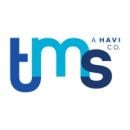If you started a new job in the past few years, you might not know how tall your coworkers are. After months of seeing them from the chest up on Zoom calls, it might surprise you to discover that the strongest personality on your team only comes up to your shoulders.
There are benefits and drawbacks to working from home and in the office, and many companies shifting to a hybrid model hope to combine the advantages of both as much as possible. It’s a model that appeals to a lot of workers — in a Gallup poll on the future of hybrid work, over half of employees said they preferred a hybrid model in their workplace going forward.
The key to making a hybrid model work? Flexibility. Every company and each individual with that company is going to have different wants and needs, and a successful approach needs to take those into consideration. At Porcaro, Stolarek and Mete (PSM) Partners, for example, hybrid flexibility allows IT Service Desk Engineer Alex Seibel a flexible safety net.
“If I need to be home more, my company allows me that luxury,” said Seibel. “Personally, though, I prefer to be in the office, since I love interacting with my team.”
Built In Chicago sat down with PSM Partners, Grubhub, The Marketing Store and Kalderos to learn about their hybrid models. Whether their employees want to stay home to save on gas and spend time with their families or go into the office to meet their coworkers and have tangible brainstorming sessions, these companies make a concerted effort to accommodate what works best for everyone.

PSM Partners is a boutique IT consulting company.
Briefly describe your company’s hybrid model.
At PSM, our hybrid model is extremely flexible and our leadership understands that everyone’s situation is different. The office currently has a good rotation of people coming in, although some employees are fully remote based on their circumstances. We also have a lot of team members that report to client sites. Some employees choose to come in every day, and others come in one day a week — it just depends on everyone’s situation.
When did your employer implement its hybrid work policy? What impact has this shift had on the way you and your teammates work?
We have been making a real effort to get more people into the office this year. We have added different events and get-togethers such as birthday lunches, homecomings for our onsite staff and happy hours. We recently launched Yammer as another way to communicate closely with one another virtually. Getting the flexibility to work from home is great, but the buzz in the office is unmatched. It’s awesome when everyone comes in for birthday lunches and gets to see each other — those are for sure the best days. It’s hard to beat face-to-face communication, but our team works efficiently regardless of where we are, and we constantly keep in touch — even if we aren’t sitting at the next desk over.
Getting the flexibility to work from home is great, but the buzz in the office is unmatched.”
What are the main advantages you’ve experienced under a hybrid work model?
The hybrid model has many advantages for employees’ personal lives. Everyone gets more time with their family and there’s no more wasted time commuting — let’s not even talk about how much we save with gas prices these days. For me, it’s the comfort of knowing that if I need to be home more, my company allows me that luxury — and it’s nice to know they value that. Personally, though, I much prefer to be in the office, as I also love interacting with my team and I’m happy to be able to work with them no matter where we are.
Grubhub is an online food delivery marketplace.
Briefly describe your company’s hybrid model.
Grubhub is big on in-person collaboration, but leadership also understands that having flexible options is crucial for employees. With the hybrid model we’ve implemented, employees are encouraged to come into an office two to three days per week, working remotely the remainder. The specific days people go in vary by team, and it’s a conversation employees have with their managers to determine a schedule that works best.
When did your employer implement its hybrid work policy? What impact has this shift had on the way you and your teammates work?
The hybrid work policy went into effect this March. Since most of our team is already entirely remote and working across five time zones, going into the office hasn’t affected us greatly in terms of pace or performance. That said, going into the office a few days per week gives me opportunities to meet face-to-face with other team leads, plan or coordinate projects better and have collaborative brainstorming and white-boarding sessions that are more difficult to accomplish over a computer screen.
I’m a working parent — and with the hybrid model, I’m able to cut down on time spent commuting and spend more quality time with my family.”
What are the main advantages you’ve experienced under a hybrid work model?
I’m a working parent — and with the hybrid model, I’m able to cut down on time spent commuting and spend more quality time with my family. Having this flexibility allows me to have a much more rounded work-life balance.

The Marketing Store is a global customer engagement agency.
Briefly describe your company’s hybrid model.
The Marketing Store is very flexible. Some teams mainly work remotely, and others try to go to the office together once per week — but that is more of a goal than a requirement. If you’re not feeling well enough to go in or feel that your workday would be more productive at home, then your manager is likely willing to accommodate.
We also recently started a Flex Friday program, where we avoid scheduling internal meetings and work more flexibly on Fridays. Of course, if you have projects that you need to complete then you do so — but the point is to allow you to wind down, catch up on work, continue learning and prepare for a relaxing weekend!
When did your employer implement its hybrid work policy? What impact has this shift had on the way you and your teammates work?
The company has been following CDC guidelines and recommendations, and as soon as vaccines became widely available, they were already strategizing on office reopening and implementing a hybrid work model. Since then, The Marketing Store has further refined its policy by adding Flex Fridays.
It’s hard to say how the state of work will look in the future, but at every step The Marketing Store has been receptive to feedback. While it’s great to be able to work from home and have extra flexibility, having the option to go back into the office allows my team to regroup and better collaborate in ways that we can’t over Slack and video calls. It’s also nice seeing everyone’s faces in person!
My colleagues can now spend more time with family in ways that weren’t possible when they worked every day in the office.”
What are the main advantages you’ve experienced under a hybrid work model?
Through this pandemic, we’ve learned that we not only survive but thrive in a hybrid work environment. We save time by not having to commute and prepare for the office, and we also save money when we can eat at home and don’t have to commute every day.
The Marketing Store has a diverse workforce with people of all ages and backgrounds, and it’s great to hear how some of my colleagues can now spend more time with family and take care of themselves in ways that weren’t possible when they worked every day in the office.
Lastly, we’re truly an international company — so I often work with colleagues, clients and partners from across the globe. Accommodating the time zone differences can be tough, but being able to work from home really helps and provides greater flexibility.

Kalderos works with healthcare providers to help manage prescription drug discounts.
Briefly describe your company’s hybrid model.
Kalderos employees are free to work however they feel most productive and comfortable, whether that’s remotely or in the office — there is no requirement regarding time coming in. Additionally, Kalderos provides a stipend to support your preferred working mode, helping employees cover costs for home office, gas and public transit.
When did your employer implement its hybrid work policy? What impact has this shift had on the way you and your teammates work?
After going 100 percent remote in the spring of 2020, Kalderos began transitioning to a hybrid working model in spring of 2021, with more and more employees regularly coming into the office in 2022.
The shift back has not actually changed the way my team works very much — we continue to operate remotely most of the time, especially because many of our team members are now across the country. But the option to have face-to-face collaborations in the office when needed — or simply get regular social interaction again — has been a welcome change.
Our work-from-home benefits over the last two years have allowed me to build a pretty great ‘megadesk’ at home.”
What are the main advantages you’ve experienced under a hybrid work model?
This may seem like an obvious answer, but working in a hybrid model has combined the best of both worlds. As a software engineer, the majority of my work can be done asynchronously, so I have been very productive working from home — and get all the flexibility, comfort and commute-saving advantages that includes. Our work-from-home benefits over the last two years have allowed me to build a pretty great “megadesk” at home.
But the downsides of remote work catch up to you quickly, and I was ready to go into the office again to have real conversations and meet many team members in person for the first time. So having that option, even if I just grab lunch with the team that day, is another advantage.













